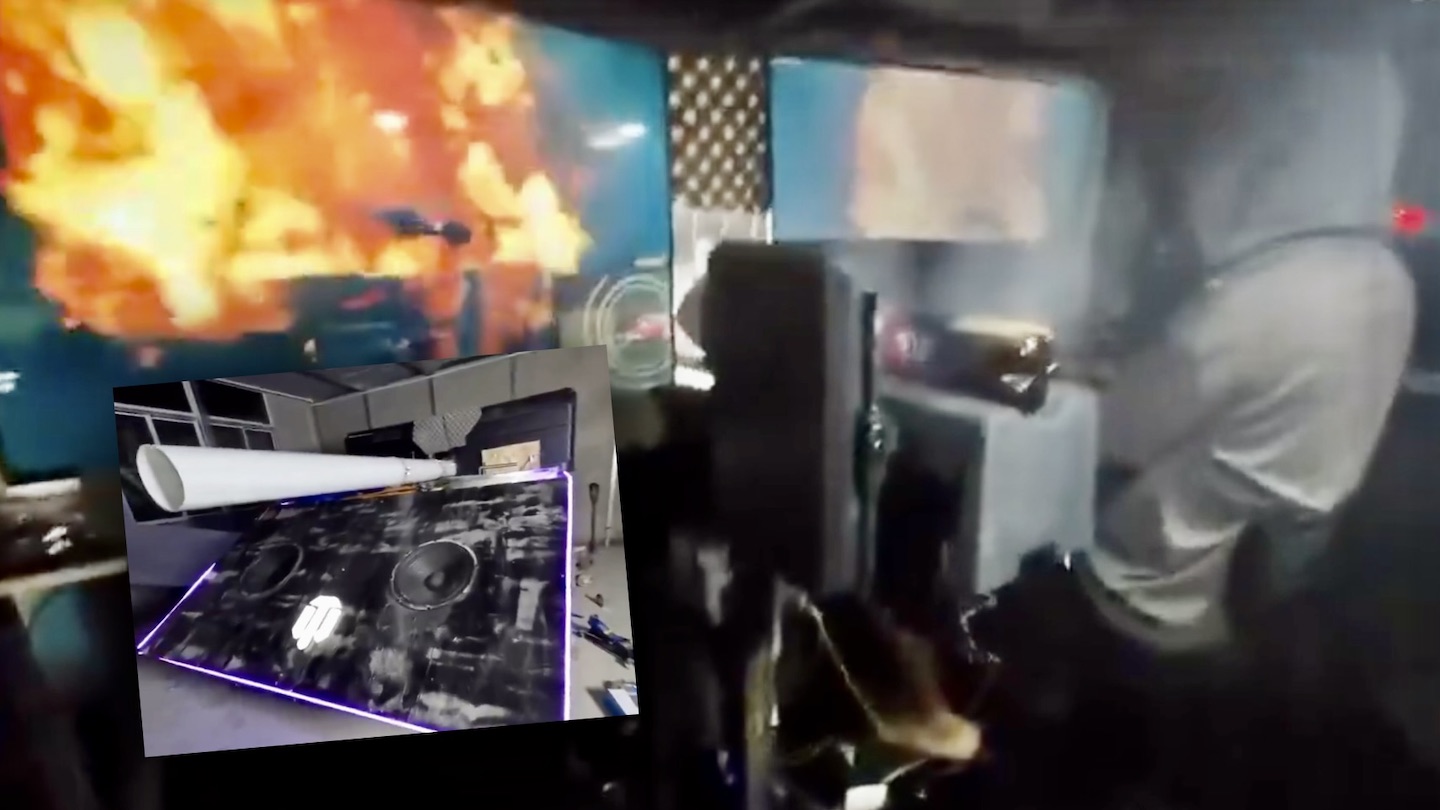Video footage recently posted online shows the efforts of one individual in creating a highly immersive tank operating experience for online war gaming. The tank simulator, seen below, even ‘fires’ soda bottle shells in lieu of real ones.
The contraption is the creation of “Malublyat,” a Chinese do-it-yourself engineer reportedly known as “the most hardcore creator” on the Chinese internet, and is designed to enhance the experience of the free-to-play game World of Tanks. Developed by the Belarusian company Wargaming and initially released in 2010, World of Tanks is popular the globe over. Featuring armor from the pre-World War II era through to the Cold War period, the game focuses on pitting two tank teams against each other. It can be played via a computer or gaming console as well as on mobile devices.

Earlier this year, footage emerged of Malublyat’s efforts to create what was already a highly immersive tank simulator, but the latest offering — which is designed to fully resemble a tank, including its interior crew compartment — takes things to another level entirely. The tank simulator isn’t the only contraption designed by Malublyat, it should be noted. In terms of military technology, gun simulators of various kinds — again paired with gaming software — have been prominent, but Malublyat has also created realistic boxing and car drifting simulators too.
The more recent video begins by showing an exterior view of the ‘tank’ from the perspective of an individual. Two large subwoofers are located towards its front, while a long tube, fastened to its top, is clearly designed to resemble a main gun. From there, the individual climbs on top of the tank simulator and lowers themselves inside via a hatch.
The inside boasts multiple flat-screen televisions, and a gunner’s sight, for streaming the gameplay. Three individuals can be seen operating the simulator — one steers, another controls the tank’s main gun, and a third ‘arms’ the gun with ‘shells’ — akin to how real tanks are operated.

Like the footage posted earlier in the year, the ‘shells’ in question take the form of large soda bottles. It’s unclear exactly how the setup for the recoil mechanism has been designed, but it is clearly programmed to respond to fires from the virtual tank’s main gun in the game. Adding further authenticity, the system exudes smoke, too.

What’s more, during the gameplay, the interior of the simulator appears to shake at times, with dust clouds falling from above, adding to the realism. This could just be for the video, but it looks like a lot of fun regardless.
It should be noted that the entertainment value of World of Tanks, enhanced by Malublyat’s customizations, goes beyond its use by civilians. Ukrainian tank operators have been known to play the game during their free time in order sharpen their reflexes as well as relax during the war in Ukraine.
“I’m playing [World of Tanks] from time to time, when I have a bit of free time,” one Lt. Nazar Vernyhora said to the New York Times last year.
Beyond World of Tanks, other video game formats, as well as far more sophisticated software, are being used by militaries the world over in order to augment traditional training techniques for personnel. The U.S. Air Force, as we’ve noted previously, trains pilots using the highly-realistic Digital Combat Simulator World (DCS) computer game paired with virtual-reality headsets.
With that said, the new and improved simulator designed specifically for World of Tanks by Malublyat is certainly something to see, and we’ll be keeping our eyes peeled for what comes next from their workshop.
Contact the author: oliver@thewarzone.com
